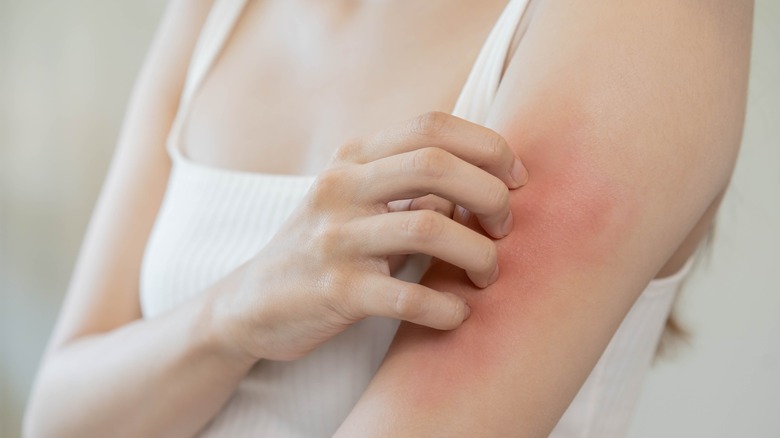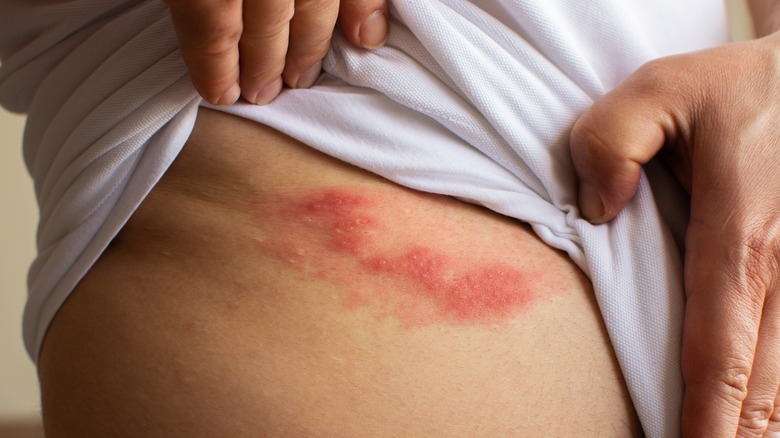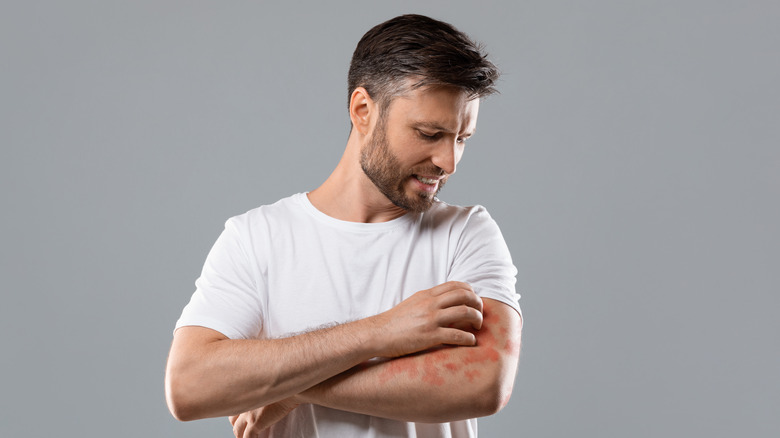Eczema Versus Shingles: Here's How To Distinguish Between The Two
The skin is the largest organ in the human body, and it serves several important functions. The skin protects the body from external environmental and biological threats, such as the sun's ultraviolet rays, pollutants, and infections (via MedlinePlus). The skin also helps regulate body temperature by releasing sweat and expanding blood vessels (via MedicalNewsToday). Furthermore, the skin plays a role in the body's metabolism by producing vitamin D when exposed to sunlight. Overall, it serves many important functions that help keep our bodies healthy.
That being said, skin conditions are very common and can affect people of all ages. According to the National Center for Complementary and Integrative Health, approximately 1 in 3 people in the United States have a skin condition. Some skin conditions are minor and resolve themselves with time, while others require medical treatment from a doctor. Amongst others, common skin conditions include eczema and shingles, according to WebMD.
The varying causes of eczema and shingles
Eczema, or atopic dermatitis, is a chronic skin condition that causes itchy, red, and inflamed skin. It is a common condition that affects people of all ages, but it is most commonly seen in children, per the Cleveland Clinic. Eczema can be caused by a variety of factors, including genetics, environmental factors, and allergies. According to the Mayo Clinic, eczema can be chronic and can flare up at any time. However, the severity of the symptoms can vary from person to person, says WebMD. Some people may only experience mild symptoms, while others might have more severe reactions requiring treatment. Eczema is usually treated with corticosteroid gels and creams.
Shingles, or herpes zoster, is a viral infection. The varicella-zoster virus, which causes chickenpox, is responsible for the condition, according to the Mayo Clinic. If you've previously had chickenpox, the virus can remain dormant in the body, resurfacing later as shingles. Shingles are more common in people over the age of 50, but they can occur at any age. If you think you or someone you know may have shingles, it is important to speak with a healthcare provider for proper diagnosis and treatment. Shingles can be treated with antiviral medications to reduce the severity and duration of the infection, per the Centers for Disease Control and Prevention.
How to distinguish eczema from shingles
According to the National Eczema Association, the symptoms of eczema may include dry, sensitive, and inflamed skin with itching that ranges from mild to severe. Scratching the affected skin can lead to further irritation and inflammation. The skin may also appear red and inflamed, and in more severe cases, the skin may develop crusts or ooze fluid, according to the association.
The most common symptom of shingles is pain, ranging from mild to severe. The pain is described by some as aching, burning, or tingling, and sensitivity to touch may be experienced before a rash appears, according to the Mayo Clinic. A rash consisting of red, blister-like lesions typically appears on one side of the body, per the clinic. The rash and the blisters may be sensitive to light, and exposure to bright light can cause discomfort. Some people with shingles may also experience a fever or flu-like symptoms, such as fatigue and body aches, as well as a headache, says the Mayo Clinic.



